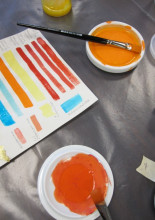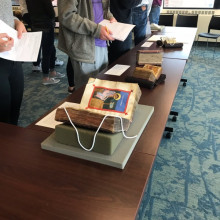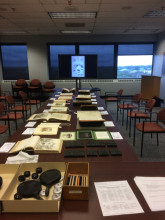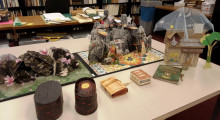Marieka Kaye
Posts tagged with instruction in Blog Beyond the Reading Room
Showing 1 - 5 of 5 items

In early April, we welcomed conservator and researcher Cheryl Porter to campus for a lecture and 3-day workshop. In this post, Marieka Kaye (U-M Library Head of Conservation & Book Repair) offers us an overview of the workshop which explored the colors used by artists working in the Islamic and European traditions of the medieval era.

Instruction is in full swing this fall semester! We gave 27 presentations in October alone for 527 participants. Here’s a small sampling of our instruction for the month!

As part of last week's Enriching Scholarship events, I offered an introductory workshop on the subject of illustrations in early printed books. In brief, the participants of this session learned not only about how these extraordinary images were created but also about how to identify the details of their production by examining actual books. For each book the following question was raised: are these illustrations woodcuts, engravings, or lithographs? We all had great fun!

In January of 2016, Professor Susan Siegfried reached out to Pablo Alvarez and myself with a proposal: a class focused on 19th century color plate books, tightly focused on the use of original materials, with weekly meetings in Special Collections and out-of-class assignments, drawing heavily on the private collection of Dr. James Ravin, MD, of Toledo. Would we facilitate such an endeavor? Could we?

Last Friday, I was privileged to welcome students from the College for Creative Studies in Detroit to the Special Collections Library. As part of a class on exploring the book, attendees were preparing for an assignment to create a one-of-a-kind artists’ book. The instructor had asked me to find examples of unusual artists’ books with interesting structures, offering me an opportunity to explore new dimensions of Special Collections’ artists’ book holdings.